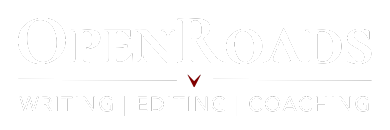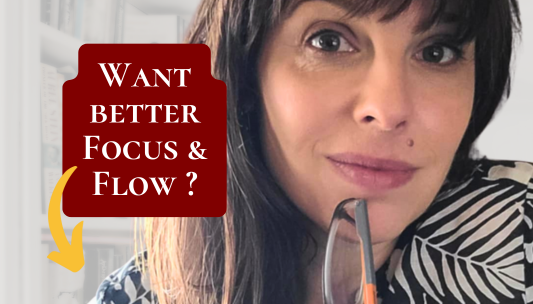If you want to know how to sell your book and reach more readers, developing a clear reader persona is the most critical step you can take.
A reader persona is a detailed profile of your ideal audience, the person who will connect with your story and happily purchase your work.
Without this clarity, your marketing can feel overwhelming, sales may stall after launch, and royalties might not materialize. But when you know exactly who you are writing for, selling your book becomes easier, more genuine, and much more rewarding.
Why Understanding Your Reader Persona is Essential
Most authors pour their hearts into their work, send it into the world, and then wonder why sales do not follow.
The reality is, most books, even those from major publishers, do not move more than a few hundred copies.
Sometimes this is due to a lack of marketing after the initial release, but more often it is because the book has not been targeted to the right audience.
If you want to sell your book, you need to know who you are writing for. That is where the magic of a reader persona comes in.
A reader persona is more than just age or gender. It is a semi-fictional representation of your perfect reader, including their habits, motivations, frustrations, and emotional triggers. In business, this is known as a buyer persona or customer avatar.
For authors, your reader persona is the foundation for crafting messages that resonate and for building marketing strategies that actually convert browsers into loyal readers.
When you have a well-developed reader persona, you stop trying to appeal to everyone. Instead, you create meaningful connections with people most likely to love your book, buy it, and become lifelong fans.
What Readers Consider Before Buying a Book
Learning how to sell your book means understanding the decision-making process of readers. Here are some of the questions they ask themselves before making a purchase:
-
Is this book worth my money?
-
Will I enjoy it?
-
Is it a story I would choose?
-
Do I want to spend hours with this author’s voice?
-
Who wrote this, and do I recognize their name?
-
What are other readers saying about this title?
-
Does the cover and description grab me?
-
Is it available in my preferred format, ebook, print, or audio?
-
Does the price feel fair?
-
Will this book provide the escape, insight, or entertainment I am seeking?
-
Is the length right for my reading habits?
If you cannot confidently answer these questions for your ideal audience, you are missing out on sales and the opportunity to build lasting relationships.
How to Create a Reader Persona That Helps You Sell Your Book
Building a thorough reader profile is an investment in your writing career and a foundation for generating ongoing income from your books. The better you understand your audience, the better you can craft stories that delight them and promote your work in ways that feel authentic. This matters whether you self-publish, work with a small press, or seek a traditional publishing deal.
When readers decide to purchase your book, they are making a decision to part with both their money and time. Knowing what motivates them to do so is critical to developing your marketing plan, even including the book description, jacket copy, and beyond.
Why Go In-Depth? Your Career Depends On It
Many writers rush through this process, jotting down a few surface details and moving on. But the real advantage comes from digging deep.
When you truly get your readers’ desires, frustrations, and reading habits, you are not just guessing what might sell, you are building a sustainable career and future royalties.
This work pays off in every area:
-
Writing stories that resonate: You will create characters, plots, and themes that speak directly to your audience.
-
Marketing that feels natural: Your messaging and promotions will connect because you know who you are talking to.
-
Long-term success: The better you serve your reader persona, the more likely you are to build a loyal following that supports every book you write.
The Industry Reality: Agents and Publishers Expect This
If you are aiming for traditional publication, understanding your reader persona is essential. Agents and publishers want to see that you have a specific audience in mind. In fact, not knowing your reader is the top reason book proposals are rejected. If you have ever received a kind rejection that says, “I loved your writing, but I do not know how to sell this,” it is almost always because you did not identify your audience. No agent or publisher will do this work for you.
Step-by-Step: Building Your Reader Persona
Here is how to go beyond the basics and develop a reader persona that truly helps you sell your book:
1. Document What You Know
Start with what you already understand about your readers and your genre. List:
-
Age, gender, location, education, profession
-
Favorite books, authors, genres, and tropes
-
Hobbies, interests, and lifestyle choices
-
Where they spend time online and offline, such as Goodreads, TikTok, book clubs, or conventions
2. Research Deeply
-
Read reviews: Dive into Amazon and Goodreads reviews for books like yours. Note what readers love, what frustrates them, and what they wish they could find.
-
Study comparable titles: Find several successful books similar to yours. Analyze their audiences and look for patterns in reviews and discussions.
-
Join communities: Participate in reader groups on Facebook, Reddit, Discord, and other forums. Listen to what real readers are saying about your genre.
-
Survey your audience: If you have a mailing list or social following, use surveys or polls to ask about their preferences, habits, and frustrations.
3. Create a Narrative Profile
Turn your notes into a story or avatar. Move beyond bullet points and give your reader persona a name, daily routine, favorite authors, and even a book-buying budget.
For example:
“Alex is a 38-year-old teacher who reads two fantasy novels a month, loves intricate worldbuilding, and spends time on Reddit and Goodreads searching for new releases. She is frustrated by predictable plots but is fiercely loyal to authors who surprise her.”
4. Refine and Test
Compare your persona to real reader feedback. Use worksheets or AI tools to refine your profile, but always check the results against your research and intuition. Update your persona as you learn more.
5. Put Your Persona to Work
Keep your reader persona visible as you write, market, or pitch your book. Use it to:
-
Shape your stories and themes
-
Write blurbs, ads, and social posts that speak directly to your audience
-
Identify the best places to promote your book
-
Craft query letters and proposals that show agents and publishers you know exactly who will buy your book
How to Use Your Reader Persona to Sell Your Book
Once you have a clear reader persona, put it to use by:
-
Writing book descriptions, ads, and social media posts that speak directly to your audience’s desires and concerns
-
Choosing marketing platforms and content formats where your readers spend time
-
Addressing your audience’s objections and motivations in your messaging
-
Guiding decisions about cover design, pricing, and even future book topics
When you know exactly who you are talking to, your marketing becomes more focused and effective. This clarity helps you build a loyal readership that returns for every new release.
The Mindset Shift: From Selling to Serving
The biggest transformation in learning how to sell your book is realizing that marketing is not about pushing your story on strangers. It is about helping your reader persona discover the book they have been longing for.
When you approach marketing as service, it feels authentic, generous, and rewarding.
Your book is not for everyone, and that is a strength.
The more specific your reader persona, the more magnetic your book becomes to the right audience. These readers become your champions, reviewers, and biggest supporters.
Your Next Step to Reaching More Readers
If you are tired of feeling invisible, frustrated by slow sales, or overwhelmed by marketing, creating a reader persona is your game-changer. It is a way to honor your work and build real connections with the readers who need your stories most.
To help you get started, I have created a practical, easy-to-use workbook that walks you through every step of building your reader persona.
Download the Reader Persona Workbook. And learn how to sell your book with confidence and ease.




